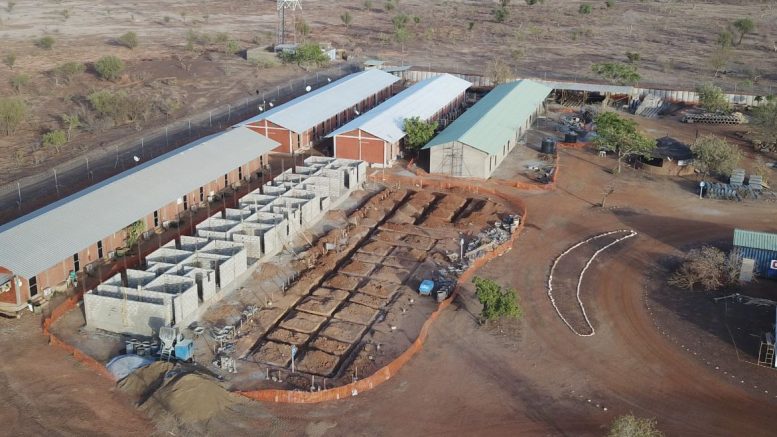Orezone Gold (TSXV: ORE; US-OTC; ORZCF) has released assays from its 90%-owned Bombore gold project in Burkina Faso, about 85 km east of the capital Ouagadougou. The 150.2 sq. km project hosts the largest undeveloped gold deposit in Burkina Faso, according to the company.
Highlights included drillhole BBD1074, which intersected 50 metres grading 1.40 grams gold per tonne starting from 246 metres downhole, including three metres of 8.89 grams gold. Hole BBD1068 returned 21 metres of 1.56 grams gold from 88 metres, including 16.45 metres of 2.35 grams gold.
The company said the focus of the drilling is to test whether high-grade mineralisation at the project’s main deposit, P17S, in the south of the P17 area, is present in the previously untested Gap zone, a 600-metre area between the northeast extension of the P17S NE deposit and the P17 zone to the north. The drilling has extended the strike of the P17S deposit over 600 metres outside the existing reserve pit, and remains open at depth and to the north towards P17, it said.
The P17 mineralised trend is “shaping up to be an outstanding target for Bombore,” Patrick Downey, Orezone’s president and CEO, stated in a press release, adding that the latest drill results support the company’s belief that the P17 area “has the potential to host a large-scale higher-grade gold resource amenable to open-pit mining.”
The 2021 drill program northeast of the defined reserves and resources at the P17S deposit has identified several wide, multi-gram near-surface intersections, the company said.
The most recent drilling intersected broad zones of mineralization at depth, extending the down plunge strike of the P17S NE deposit into the Gap zone by 150 metres. The P17S NE deposit remains open at depth and to the north.
The company plans additional drilling to infill the Gap zone in the fourth quarter after the rainy season.
An updated feasibility study on Bombore completed in 2019 envisioned an open-pit mine producing an average of 117,760 oz. of gold a year over a 13-year mine life. All-in sustaining costs are expected to average US$730 per oz. over the life of the mine.
Initial capital costs were estimated at US$153 million, with US$66.2 million budgeted for sustaining capital over the mine life. The study estimated the after-tax net present value using a 5% discount rate at US$361 million, based on a gold price of US$1,300 per oz., and an after-tax internal rate of return of 43.8%. Initial capex could be paid back in about two and a half years.
The updated study was based on 229.4 million measured and indicated tonnes grading 0.69 gram gold per tonne for 5.1 million contained oz. gold and inferred resources of 53.3 million tonnes grading 0.64 gram gold for 1.1 million gold ounces. The resource estimate includes the P17S deposit only.
Craig Stanley, an analyst at Raymond James, notes that the feasibility study for Bombore was based on a phased development approach. “Phase 1 involves an oxide only operation at 5.2 million tonnes per annum with construction capex of $153 million; Phase 2 involves additions to the mining fleet and processing circuit in Year 2 to process sulphide material at 2.2 million tonnes per year (oxides drop to 3 million tonnes per annum, maintaining throughput at 5.2 million tonnes per annum) with capex of $64 million funded from cash flow.”
The project, Stanley added in his research note, “was designed for Orezone’s size, providing a manageable upfront capex that allows the company to generate cash flows from oxide ore to fund the Phase 2 Sulphide Expansion.”
According to Stanley, Bombore “is on schedule and fully funded to first gold pour in 3Q 2022.”
At press time in Toronto, Orezone was trading at $1.50 per share within a 52-week trading range of 81¢ and $1.70. The company has about 256 million common shares outstanding for a $383.9 million market capitalization.


Be the first to comment on "Orezone Gold reports gold intercepts from previously untested zone at Bombore"